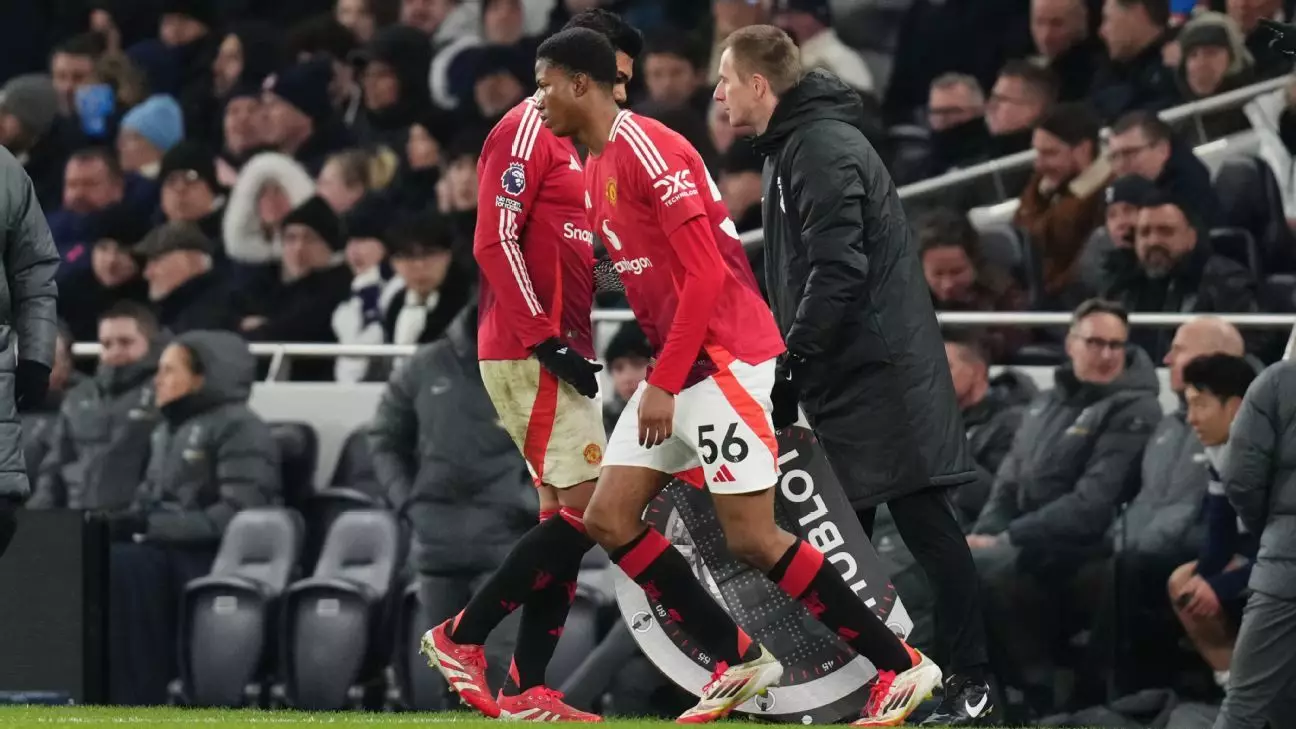In the realm of English football, few clubs hold the same historical gravitas as Manchester United. Once deemed a powerhouse, the club now finds itself entwined in a narrative that is spiraling downward, marked by a series of dismal performances and unsettling changes. This article examines the recent developments surrounding Manchester United, focusing on the challenges they face, the decision-making processes of their management, and the implications surrounding their youth academy and first-team strategy.
A Shift in Fortunes
The magic that once surrounded Manchester United, often epitomized by moments of youthful brilliance, seems now to be a relic of the past. Instances like Federico Macheda’s memorable debut against Aston Villa or Marcus Rashford’s iconic entry against Arsenal have long been celebrated within the annals of the club’s history. These moments not only captivated fans but solidified a template of how youth could be harnessed for success. However, as evidenced by the recent match against Tottenham, where manager Ruben Amorim’s choice to introduce 17-year-old Chido Obi-Martin resulted in the youngster failing to touch the ball, the narrative has changed. What was once a story of triumph has morphed into a tale of necessity and desperation, with the club relying heavily on its academy to fill gaps left by injuries and overall squad depletion.
A staggering twelve players have found themselves sidelined due to injury or illness, a situation that speaks volumes about the current state of the club’s first team. Faced with such adversity, United’s bench against Tottenham consisted of eight teenagers, a sight that would have been unthinkable during the height of Sir Alex Ferguson’s reign. This overwhelming reliance on youth points to a larger systemic problem at the club: the inability to attract or maintain seasoned talent. Ironically, while this strategy previously brought immense joy and dazzling performances, it now serves as a reminder of the stark reality that Manchester United may be gravely unprepared for the rigors of modern football.
The decision to throw Obi-Martin into the fray at a crucial moment raises questions about Amorim’s tactical acumen and player management. Would it not have been more prudent to introduce the youth player earlier in the match, allowing him a chance to find his rhythm and influence the game? Conversely, exposing such a young talent on a stage dictated by dire circumstances could be seen as reckless. Amorim’s remarks regarding the impact of youth players indicate a desire to nurture talent; however, this philosophy raises the crucial question of timing. Should a club with aspirations as lofty as United’s take such risks, or is it more beneficial to ensure young players are shielded until they are unequivocally prepared for the spotlight?
A Tale of Contrasts
The current plight of Manchester United starkly contrasts with the situation at Tottenham, where coach Ange Postecoglou faces his own set of challenges. While Spurs secured a narrow 1-0 victory, it cannot overshadow the anxiety that lingers over their season. Despite prevailing in this outing, Postecoglou’s tenure has similarly endured scrutiny due to a series of poor performances. The victory not only injected some positivity into the club but also highlighted the contrasting paths of two teams steeped in rich football history. Where United is plagued by uncertainty and turmoil, Spurs, albeit under pressure, seem to have found temporary relief through tactical flexibility and the imminent return of injured players.
Outside of the stadiums, the atmosphere remains volatile. Fans of both clubs express their frustration and hopes, but in the case of Manchester United, discontent has reached a fever pitch. The allure and optimism that once surrounded the club are being overshadowed by protests against the ownership of the Glazer family and concerns over the future direction of the club. With United languishing in 15th place in the Premier League, an air of complacency or perhaps acceptance seems to cloak the team. Such a state of existence is rife with peril, and while the club may not be in immediate danger of relegation, the danger of becoming entrenched in mediocrity looms large.
Manchester United’s current scenario encapsulates a classic tale of unpredictability in football. With a blend of youth, experience, and historical expectations colliding, the path forward remains clouded. The impending decisions made by Amorim, coupled with the club’s approach toward nurturing young talent, will undoubtedly shape the future of one of football’s most storied franchises. As United stands at a critical juncture, the question looms: Can the club reinvent itself and find its way back to former glories, or will it continue to fade into the annals of history?

